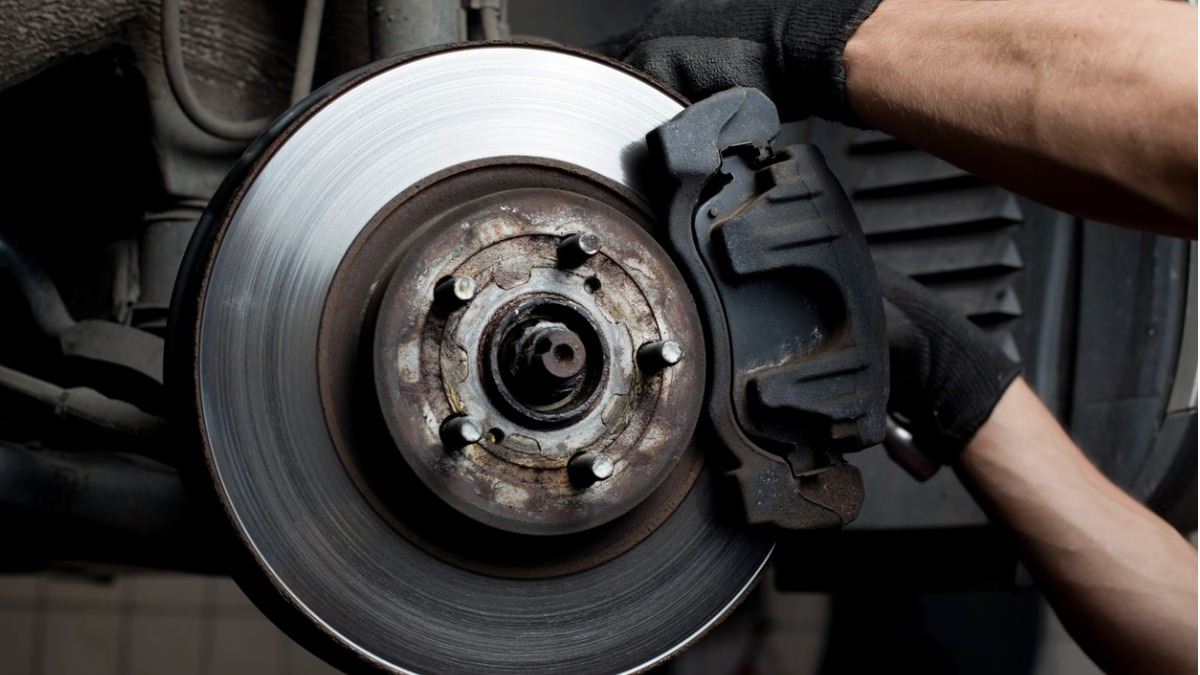

Articles
How To Know If You Need New Calipers
Modified: February 22, 2024
Learn how to determine if you require new calipers with our informative articles. Explore the signs and symptoms to look out for and take action today.
(Many of the links in this article redirect to a specific reviewed product. Your purchase of these products through affiliate links helps to generate commission for Storables.com, at no extra cost. Learn more)
Introduction
When it comes to your vehicle’s braking system, every component plays a crucial role in keeping you safe on the road. The calipers, in particular, are essential for the proper functioning of your brakes. Calipers are responsible for applying pressure on the brake pads, which ultimately leads to slowing down or stopping your vehicle. Over time, calipers can wear out or develop issues that affect their performance.
In this article, we will discuss various signs that indicate whether you need new calipers for your vehicle. By understanding these signs and promptly addressing any caliper issues, you can ensure that your brakes operate optimally and maintain your safety on the road.
Key Takeaways:
- Regularly inspect your calipers for signs of damage, corrosion, and wear to maintain optimal braking performance and ensure safety on the road.
- Address any signs of failing calipers, such as uneven brake pad wear, spongy brake pedal, or abnormal brake noises, promptly to prevent accidents and maintain efficient braking.
Read more: How Do You Know If You Need A New Water Pump
Signs of Failing Calipers
Identifying the signs of failing calipers is crucial in maintaining the safety and efficiency of your vehicle’s braking system. Here are some common signs that indicate your calipers may need replacement:
- Uneven Brake Pad Wear: If you notice uneven wear on your brake pads, it is a clear indication that your calipers are not functioning properly. Uneven wear patterns, such as one brake pad wearing more than the others, can be a result of a caliper sticking or not applying equal pressure on the brake pads.
- Spongy Brake Pedal: A spongy or soft brake pedal is another warning sign of failing calipers. If you need to apply excessive force on the brake pedal or if it feels mushy or depressed when you press it, it could mean that the calipers are not exerting the necessary pressure on the brake pads.
- Brake Fluid Leaks: Calipers have hydraulic pistons that push the brake pads against the rotors. If you notice any brake fluid leaks around the calipers, it’s an indication of a faulty seal or damaged caliper. Brake fluid leaks not only compromise your braking performance but can also lead to further damage to other components of the braking system.
- Sticking or Dragging Brakes: A caliper that is sticking or dragging can cause unnecessary friction on the brake rotor, resulting in poor braking performance. You may notice the vehicle pulling to one side, especially when applying the brakes, or a burning smell when driving. These are signs that one or more calipers are not releasing properly after the brakes are applied.
- Abnormal Brake Noise: Unusual noises, such as squeaking, grinding, or scraping sounds when you hit the brakes, can indicate caliper issues. These noises are typically a result of uneven pressure on the brake pads or the caliper not fully releasing after braking.
If you experience any of these signs, it is important to have your calipers inspected and repaired or replaced as necessary. Ignoring caliper issues can lead to decreased braking performance, increased stopping distances, and even potential accidents on the road.
Uneven Brake Pad Wear
One of the clear signs that your calipers may be failing is if you notice uneven wear on your brake pads. Uneven brake pad wear occurs when one brake pad wears down more than the others. This can be caused by several factors related to the calipers.
One potential cause of uneven brake pad wear is a sticking caliper. When a caliper fails to release properly after the brakes are applied, it can cause continuous contact between the brake pad and the rotor, resulting in accelerated wear. This can lead to one brake pad wearing down faster than the others.
Another possible reason for uneven wear is a caliper that is not applying equal pressure on both brake pads. If the caliper is not functioning correctly, it may not distribute the pressure evenly, causing one brake pad to bear the majority of the force. As a result, that brake pad will wear down more quickly than its counterpart.
Uneven brake pad wear can also be influenced by other factors such as alignment issues, worn suspension components, or a contaminated brake system. It is essential to address these underlying issues along with caliper problems to ensure optimal brake performance and even pad wear.
To identify whether your brake pads are wearing unevenly, you can visually inspect them through the wheel spokes. If you notice that one pad is significantly thinner than the others, it indicates uneven wear. Additionally, you may feel vibrations or pulsating sensations when applying the brakes if the pads are unevenly worn.
If you notice uneven brake pad wear, it is important to have your calipers inspected and repaired or replaced as needed. Continuing to drive with unevenly worn brake pads can compromise your vehicle’s braking efficiency, potentially leading to longer stopping distances and increased risks on the road.
Spongy Brake Pedal
A spongy or soft brake pedal is another common sign that your calipers may be failing. When you press down on the brake pedal, it should feel firm and responsive. However, if you notice that the brake pedal feels mushy or depressed, it could indicate a problem with the calipers.
One possible cause of a spongy brake pedal is air in the brake lines. When air enters the brake system, it can affect the caliper’s ability to exert the necessary pressure on the brake pads. This can result in a spongy feeling when you apply the brakes since the pressure is not being transmitted effectively.
Another potential cause of a spongy brake pedal is a damaged caliper piston or caliper seals. The caliper uses hydraulic pressure to push the brake pads against the rotors. If the piston or seals are worn or damaged, it can lead to a loss of hydraulic pressure, causing the brake pedal to feel soft and less responsive.
It is important to note that a spongy brake pedal can also be caused by other issues such as a low brake fluid level, a malfunctioning brake master cylinder, or worn brake pads. However, if these other components have been ruled out as the cause, it is likely that the calipers are to blame.
If you experience a spongy brake pedal, it is crucial to have your calipers inspected by a qualified mechanic. They will be able to determine the exact cause and recommend the necessary repairs or replacements. Ignoring a spongy brake pedal can compromise your braking efficiency and increase the risk of accidents on the road.
Regular maintenance and inspections of your brake system can help to identify caliper issues early on and prevent potential brake failure. If you notice any changes in the brake pedal feel or have concerns about your braking performance, it is always best to have a professional evaluate your vehicle to ensure your safety on the road.
Brake Fluid Leaks
Brake fluid leaks are a clear indication of a problem with your calipers. Calipers have hydraulic pistons that push the brake pads against the rotors to create friction and slow down or stop your vehicle. When the caliper seals or pistons are damaged or worn, it can lead to brake fluid leaks.
Leaking brake fluid can occur for several reasons. One common cause is a damaged or deteriorated caliper seal. Over time, the heat and pressure generated during braking can cause the seals to wear out, resulting in fluid leakage. Additionally, corrosion or debris accumulation around the caliper can also lead to seal damage and fluid leaks.
Another potential cause of brake fluid leaks is a damaged caliper piston. The piston can develop pitting, scoring, or cracks, compromising its ability to create an effective seal and leading to a loss of brake fluid.
Identifying brake fluid leaks is relatively easy, as you will notice fluid pooling under your vehicle or around the calipers. Brake fluid is typically clear or yellowish in color and has a distinct odor. If you suspect a brake fluid leak, it is crucial to address it promptly as it can compromise the performance of your braking system and increase the risk of brake failure.
Driving with a brake fluid leak can lead to a decrease in brake fluid levels, which in turn can affect the hydraulic pressure necessary to operate the calipers. This can result in a soft or spongy brake pedal and reduced braking efficiency.
If you notice brake fluid leaks, it is essential to have your calipers inspected by a qualified technician. They will assess the extent of the damage and determine whether the calipers can be repaired or if replacement is necessary. Additionally, they will inspect the brake system for any other potential issues and ensure that the brake fluid is topped up after the repair or replacement.
Addressing brake fluid leaks promptly will not only restore the proper functioning of your braking system but also help maintain your safety on the road. Regular maintenance and inspections of your brake system can help prevent brake fluid leaks and ensure optimal brake performance.
Read more: How Do You Know When You Need A New Mattress
Sticking or Dragging Brakes
Sticking or dragging brakes are a common sign of caliper issues. When the calipers fail to release properly after the brakes are applied, it can result in continuous friction between the brake pads and the rotors. This friction can cause various symptoms and negatively impact your vehicle’s braking performance.
One of the noticeable signs of sticking or dragging calipers is a vehicle that pulls to one side when applying the brakes. This occurs because one caliper is not releasing correctly, causing uneven pressure distribution on the brake pads. As a result, the wheels on one side of the vehicle will experience more braking force, leading to the pulling effect.
In addition to pulling, sticking or dragging calipers can also cause increased heat buildup in the affected brake rotor. This excess heat can result in a burning smell when driving and may even cause the rotor to warp over time. Warped rotors can lead to vibrations or pulsations felt through the brake pedal when applying the brakes.
Sticking or dragging calipers can be caused by various factors, including dirt or debris accumulation, rust, worn caliper pins, or caliper piston damage. Corrosion or rust can restrict the movement of the caliper, preventing it from releasing properly. Worn caliper pins or damaged caliper pistons can also cause the caliper to stick and not fully retract.
If you suspect that you have sticking or dragging brakes, it is crucial to have them inspected and addressed promptly. Continuing to drive with sticking calipers can lead to uneven brake pad wear, increased wear on the affected brake components, and reduced braking performance.
A qualified mechanic will be able to diagnose the exact cause of the sticking or dragging calipers and recommend the necessary repairs. This may involve cleaning and lubricating the caliper components, replacing worn or damaged parts, or in some cases, replacing the entire caliper assembly.
Timely maintenance of your brake system, including regular cleaning and lubrication of the calipers, can help prevent sticking or dragging issues. It is also important to address any signs of brake problems promptly to ensure optimal braking performance and safe driving.
Abnormal Brake Noise
Abnormal brake noise is another indicator that your calipers may be failing. When the calipers experience issues, such as sticking or uneven pressure distribution, it can manifest as unusual noises when you apply the brakes. It is important to pay attention to these noises as they can indicate potential caliper-related problems.
One common abnormal brake noise is a squeaking or squealing sound. This noise is typically caused by the brake pads vibrating against the rotors due to uneven pressure or insufficient lubrication. When the calipers fail to apply equal pressure on the pads or do not release properly after braking, it can result in these vibrations and the accompanying noise.
Another abnormal brake noise is a grinding or scraping sound. This noise is often a sign of metal-to-metal contact between the brake pads and the rotors. It can occur when the brake pads are excessively worn or if the calipers are not functioning correctly. Metal-to-metal contact is highly detrimental to both the brake pads and rotors, and immediate attention is required to prevent further damage.
It is important to note that abnormal brake noise can also be caused by other factors such as worn brake pads, debris in the braking system, or rotor damage. However, if these other issues have been ruled out, it is likely that the calipers are contributing to the abnormal noise.
If you hear any abnormal brake noise, it is essential to have your calipers inspected by a qualified technician. They will examine the condition of the calipers, brake pads, and rotors to determine the source of the noise. Depending on their findings, they may recommend caliper repairs, lubrication, or replacement.
Regular maintenance and inspections of your brake system can help prevent abnormal brake noise. Additionally, addressing any abnormal noises promptly can help prevent further damage to your brake components and ensure safe and effective braking performance.
If you notice uneven brake pad wear, leaking brake fluid, or a soft brake pedal, it may be time to replace your calipers. Regular inspection and maintenance can help prevent potential brake issues.
Diagnosing Caliper Issues
Diagnosing caliper issues is essential to identify any problems and determine whether your calipers need to be replaced. Here are some steps you can take to diagnose caliper issues:
Inspecting the Calipers: Start by visually inspecting the calipers. Look for signs of damage, such as corrosion, leaks, or loose components. Check if the calipers are properly aligned and if the mounting bolts are secure. If you notice any visible damage or irregularities, it may indicate a problem with the calipers.
Checking Brake Fluid Levels: Low brake fluid levels can be a sign of caliper issues. Check the brake fluid reservoir and ensure it is filled to the recommended level. A significant decrease in brake fluid levels can indicate a leak in the caliper or other brake components.
Testing for Caliper Sticking: Caliper sticking is a common issue that can affect braking performance. To test for sticking calipers, find a safe and open area. Drive the vehicle to around 30 mph and apply the brakes firmly. Pay attention to any pulling or uneven braking. If the vehicle pulls to one side or if you feel uneven braking, it may indicate that one or more calipers are sticking and need attention.
Determining if Calipers Need Replacement: If you have gone through the above diagnostic steps and suspect that your calipers are faulty or damaged, it is recommended to have them inspected and tested by a qualified mechanic. They will have the necessary expertise and equipment to accurately assess the condition of the calipers. They may perform further tests, such as caliper piston inspection or brake pad measurement, to determine the extent of the caliper issues and whether replacement is necessary.
Proper diagnosis of caliper issues is essential to ensure the safety and performance of your vehicle’s braking system. If you suspect any caliper problems or experience signs such as uneven brake pad wear, spongy brake pedal, brake fluid leaks, sticking or dragging brakes, or abnormal brake noise, it is crucial to have your calipers inspected and repaired or replaced as needed. Regular maintenance and inspections of your brake system can help prevent caliper issues and maintain optimal braking performance.
Inspecting the Calipers
Inspecting the calipers is an important step in diagnosing any potential issues with your braking system. By conducting a thorough visual inspection, you can identify signs of damage or wear that may require attention. Here’s what you need to know when inspecting the calipers:
Visual Examination: Start by visually examining the calipers with the help of a flashlight if necessary. Look for any signs of damage, such as cracks or dents, as these can affect the caliper’s performance. Pay attention to the overall condition of the calipers, ensuring they are clean and free from excessive dirt or debris.
Corrosion and Rust: Check for any signs of corrosion or rust on the calipers, particularly around the mounting areas and piston dust boots. Corrosion can restrict the movement of the caliper or cause the seals to deteriorate over time. If you notice significant corrosion, it may be necessary to clean or replace the affected caliper.
Leakage: Inspect the calipers for any signs of brake fluid leaks. Brake fluid leaks can occur due to damaged seals or pistons. Look for fluid dripping or pooling around the calipers or on the brake hoses. If you notice any brake fluid leaks, it is crucial to address them promptly as they can compromise the performance of your brakes.
Pad and Rotor Wear: While inspecting the calipers, take a moment to check the condition of the brake pads and rotors. Uneven pad wear or excessive wear on the rotor can be an indication of caliper issues. Look for signs of uneven pad wear, such as one pad being significantly thinner than the others. This can suggest a caliper that is not applying equal pressure on the pads.
Mounting Bolts and Hardware: Ensure that the mounting bolts and hardware on the calipers are secure. Loose bolts can cause caliper misalignment and affect brake performance. Tighten any loose bolts or replace any damaged hardware as necessary.
If you notice any visible damage, leaks, excessive corrosion, or signs of wear during the inspection, it is recommended to have a qualified mechanic further assess the calipers. They can perform more in-depth tests and inspections to determine the specific issues and provide the appropriate solutions.
Regular inspection of the calipers as part of your brake system maintenance routine can help identify potential problems early on and prevent further damage. By ensuring the calipers are in good working condition, you can maintain optimal braking performance and ensure the safety of yourself and others on the road.
Read more: How Do You Know When You Need A New Roof
Checking Brake Fluid Levels
Checking the brake fluid levels is an important maintenance task that helps ensure the proper functioning of your vehicle’s braking system. Brake fluid plays a crucial role in transmitting pressure from the brake pedal to the calipers, enabling them to apply the necessary force on the brake pads. Here’s what you need to know when checking brake fluid levels:
Locating the Brake Fluid Reservoir: Start by locating the brake fluid reservoir. In most vehicles, it is a transparent plastic container usually located near the firewall on the driver’s side of the engine bay. The reservoir is typically labeled with “Brake Fluid” or has a symbol of a brake pedal on the cap.
Visual Inspection: Begin by visually inspecting the brake fluid level. The reservoir has minimum and maximum markers indicating the acceptable range for the fluid level. Make sure the fluid is between these markers. If the level is below the minimum marker, it indicates that the brake fluid is low and needs to be topped up.
Quality of the Brake Fluid: While checking the fluid level, also observe the condition of the brake fluid. Fresh brake fluid is typically clear or slightly yellowish in color. If the fluid appears dark, cloudy, or contains debris, it may be a sign of contamination and should be replaced. Contaminated brake fluid can negatively impact the performance of the brake system and may lead to caliper issues.
Topping Up the Brake Fluid: If the brake fluid level is below the minimum marker, you will need to top it up. Before doing so, clean the area around the reservoir cap to prevent any contamination from entering the system. Remove the cap and carefully add brake fluid, following the recommendations stated in your vehicle’s owner’s manual. Use the appropriate type of brake fluid specified by the manufacturer.
Caution: When adding brake fluid, be cautious not to spill any on the surrounding components, as brake fluid is corrosive and can damage painted surfaces or other components. If you are not confident in performing this task yourself, it is recommended to have a qualified technician handle the brake fluid level check and top-up.
Regularly checking and maintaining the proper brake fluid level is crucial to ensure the effectiveness of your braking system. Low brake fluid levels can lead to a loss of hydraulic pressure, affecting the caliper’s ability to apply the necessary force on the brake pads. By keeping an eye on the brake fluid levels, you can help prevent potential caliper issues and ensure your safety on the road.
Testing for Caliper Sticking
Testing for caliper sticking is an important diagnostic step to determine if your calipers are functioning properly. Caliper sticking can affect the performance of your braking system and lead to uneven wear on brake pads, increased heat buildup, and reduced braking efficiency. Here’s how you can test for caliper sticking:
Find a Safe and Open Area: To perform the test, find a safe and open area where you can drive your vehicle at around 30 mph (48 km/h).
Apply the Brakes Firmly: While driving at the specified speed, apply the brakes firmly and evenly. Pay attention to how the vehicle responds during braking.
Observe for Pulling: If one or more calipers are sticking, you may notice that the vehicle pulls to one side during braking. This pulling effect occurs because one caliper is not releasing properly, causing uneven pressure distribution on the brake pads. The pulling is commonly felt through the steering wheel and can be an indication of sticking calipers.
Monitor for Uneven Braking: During the test, also monitor for uneven braking. If you feel that the braking force is not distributed equally among the wheels or if one wheel seems to slow down more quickly than the others, it could indicate sticking calipers.
Observe for Excessive Heat or Odor: Pay attention to any excessive heat buildup or burning odor when performing the test. Sticking calipers can result in increased friction between the brake pads and rotors, generating excessive heat. If you notice a burning smell or feel excessive heat around one or more wheels, it is advisable to have the calipers inspected and repaired by a qualified mechanic.
Seek Professional Assistance: If you suspect that your calipers are sticking or if you experience any of the symptoms mentioned above, it is recommended to have your vehicle inspected by a qualified technician. They can perform a more comprehensive assessment of the calipers and determine the necessary repairs or replacements.
It is important to address sticking calipers promptly, as they can lead to uneven brake pad wear, increased wear on other brake components, and reduced braking performance. Regular maintenance and inspections of your braking system, including checking for caliper sticking, can help ensure optimal brake performance and maintain your safety on the road.
Determining if Calipers Need Replacement
When diagnosing caliper issues, it is important to determine if the calipers need to be replaced or if they can be repaired. While some caliper problems can be addressed through repairs and maintenance, certain situations warrant caliper replacement. Here are some key factors to consider when determining if calipers need replacement:
Severity of Damage: Assess the severity of the damage or wear on the calipers. If there are cracks, significant corrosion, or other major structural issues, replacing the calipers may be the most appropriate course of action. Severe damage can compromise the overall performance and safety of the braking system.
Extent of Wear: Evaluate the extent of wear on the calipers. If the calipers are heavily worn or have reached a point where they are no longer able to function properly, replacement is often necessary. This is especially true if the wear inhibits the caliper’s ability to apply consistent pressure on the brake pads.
Leakage or Seal Damage: If there is a brake fluid leak or damage to the caliper seals, replacement is typically recommended. Leaking calipers can lead to a loss of hydraulic pressure and compromise the braking efficiency of the vehicle. Damaged seals will require replacement to restore the caliper’s functionality.
Previous Repairs: Consider the history of repairs on the calipers. If the calipers have undergone multiple repairs, it might be more cost-effective and practical to replace them instead of continuing with further repairs. Ongoing issues with repaired calipers could indicate underlying problems that can be better resolved through replacement.
Cost and Availability of Parts: Evaluate the cost of replacement parts and their availability. In some cases, depending on the vehicle make and model, it may be more cost-effective to replace the entire caliper assembly rather than sourcing individual components for repair. Additionally, if the required parts are scarce or hard to find, replacement may be the more practical option.
Recommendation from a Qualified Mechanic: Seek the guidance of a qualified mechanic when determining if calipers need replacement. A professional technician can provide an accurate assessment of the caliper’s condition and recommend the most appropriate solution based on their expertise and experience.
Ultimately, the decision to replace calipers should be based on a combination of visual inspection, assessment of wear and damage, and professional advice. Properly functioning calipers are critical for safe and efficient braking, so it is crucial to address any caliper issues promptly and ensure that the braking system is in optimal condition.
Conclusion
Proper functioning calipers are vital for the optimal performance and safety of your vehicle’s braking system. Recognizing the signs of failing calipers and taking prompt action can help maintain the integrity of your brakes and ensure a safe driving experience. Uneven brake pad wear, a spongy brake pedal, brake fluid leaks, sticking or dragging brakes, and abnormal brake noises are all indicators that your calipers may need attention.
Inspecting the calipers visually for damage, corrosion, and leaks, as well as checking the brake fluid levels, can provide valuable insights into the condition of the calipers. Testing for caliper sticking and seeking professional assistance for a comprehensive diagnosis are crucial steps in identifying caliper issues.
Depending on the severity of the damage, extent of wear, presence of leaks or seal damage, and the advice of a qualified mechanic, it may be necessary to replace the calipers. It is important to consider the cost-effectiveness and availability of replacement parts when making this decision.
Maintaining your vehicle’s braking system, including regular inspections and maintenance, can help prevent caliper issues. Cleaning the calipers, lubricating the components, and addressing any signs of wear or damage can extend the lifespan of your calipers and improve braking performance. By prioritizing caliper maintenance, you can reduce the risk of accidents, ensure efficient braking, and prolong the longevity of your braking system.
Remember, the brakes are a critical safety feature of your vehicle, and any concerns regarding your calipers should be addressed promptly. Always consult a qualified professional for a thorough inspection, diagnosis, and necessary repairs or replacements.
By staying proactive and vigilant when it comes to your calipers, you can help ensure that your brakes are in optimal condition, giving you the peace of mind to hit the road with confidence.
Frequently Asked Questions about How To Know If You Need New Calipers
Was this page helpful?
At Storables.com, we guarantee accurate and reliable information. Our content, validated by Expert Board Contributors, is crafted following stringent Editorial Policies. We're committed to providing you with well-researched, expert-backed insights for all your informational needs.
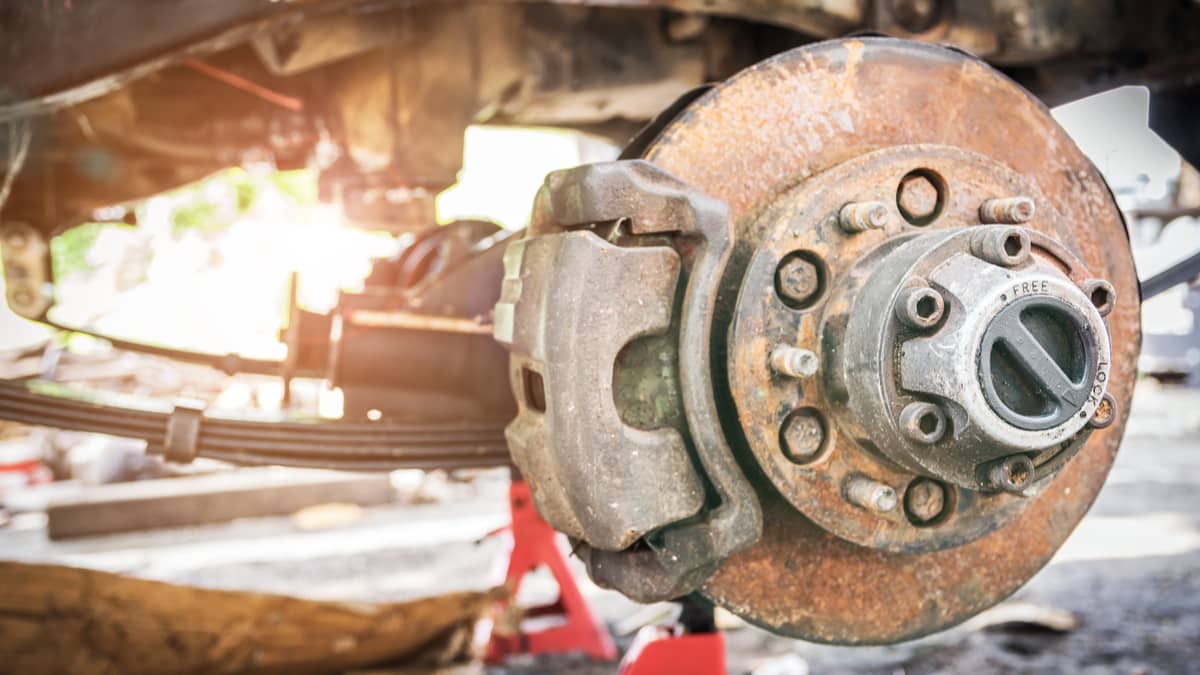
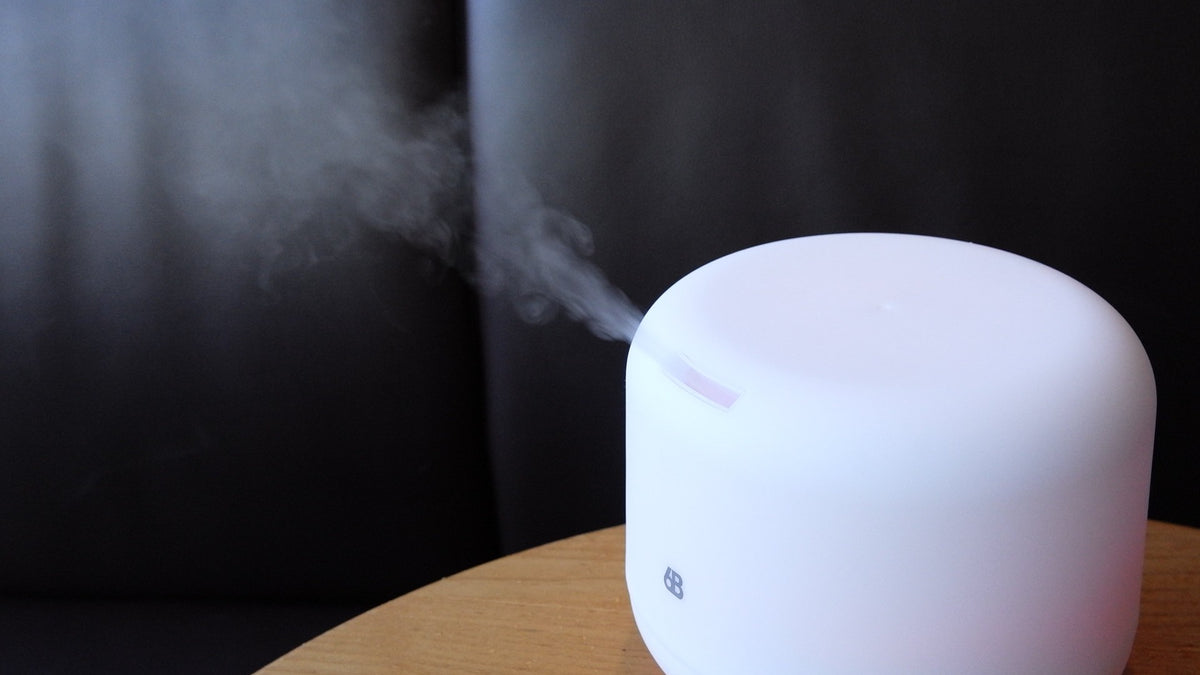


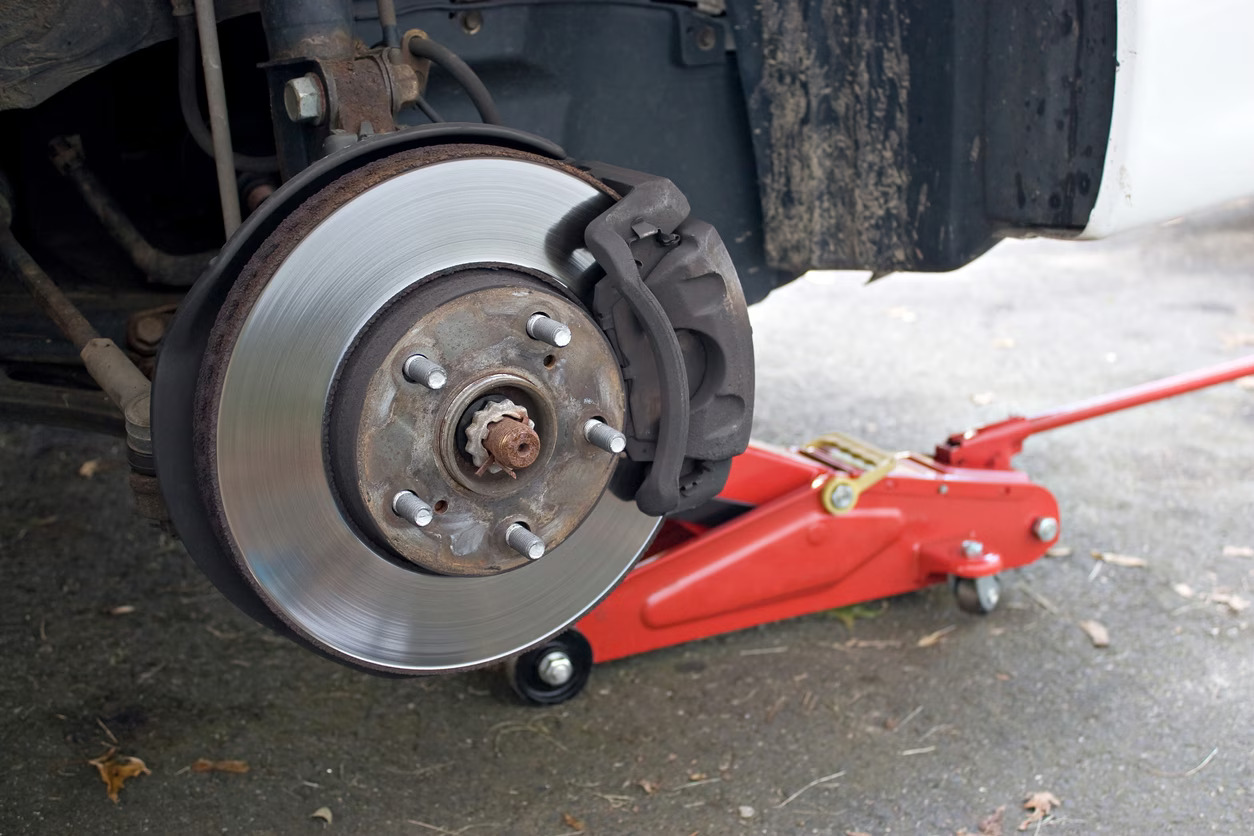
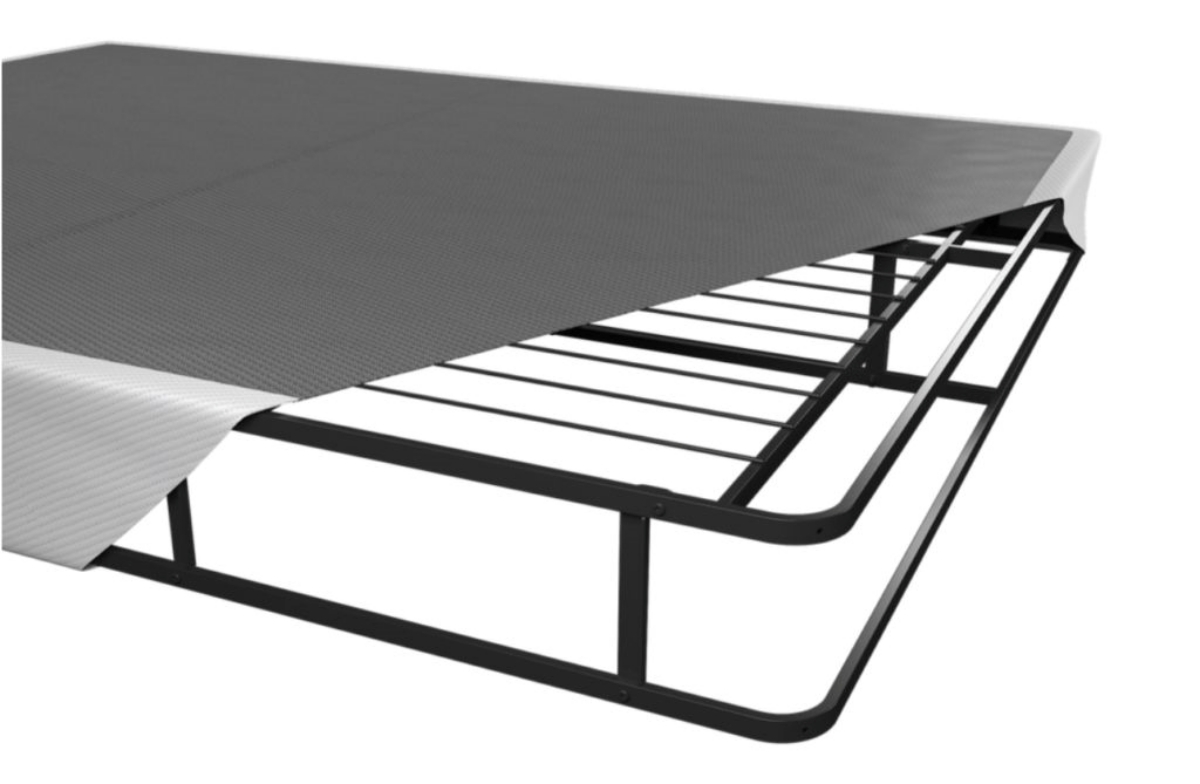




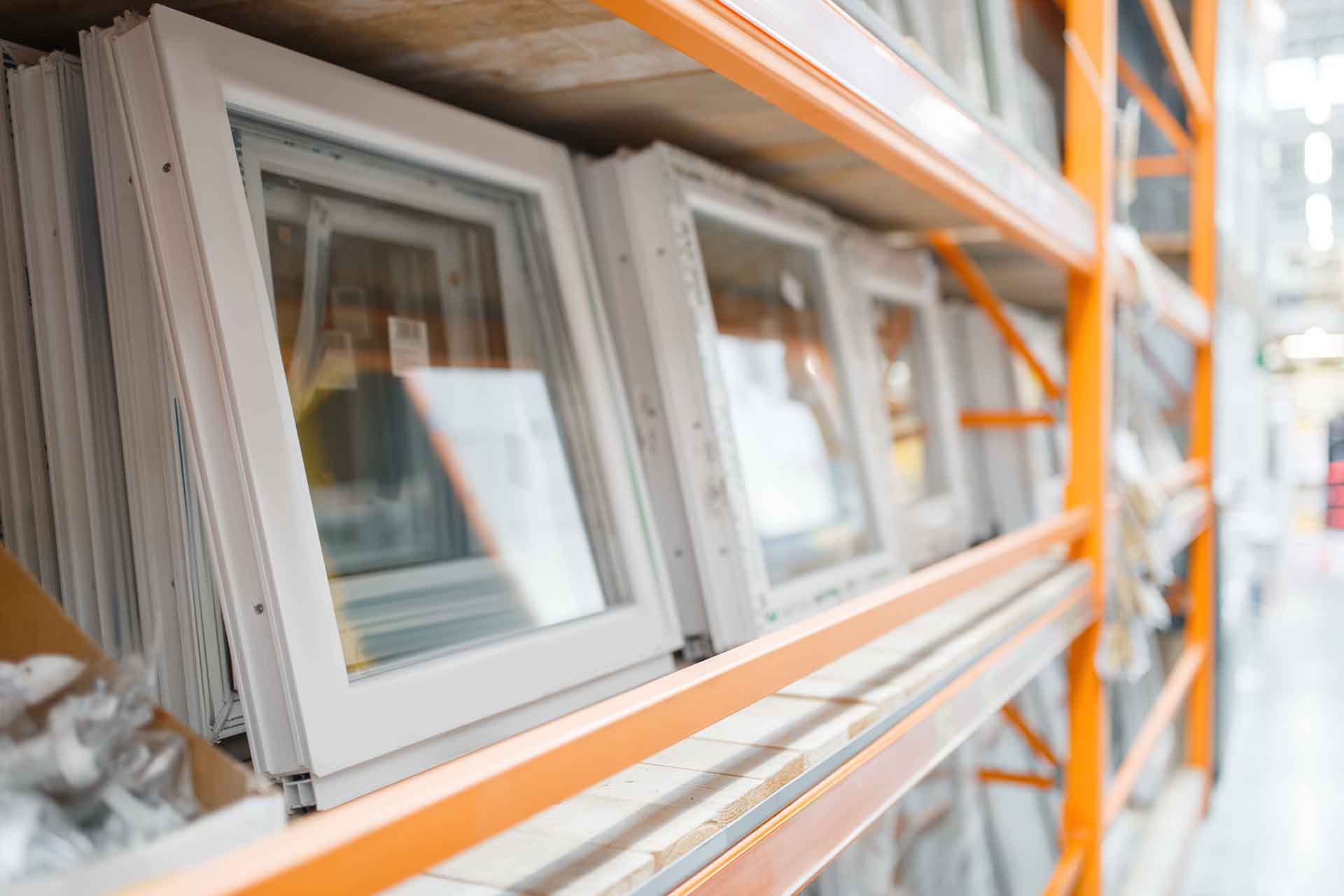

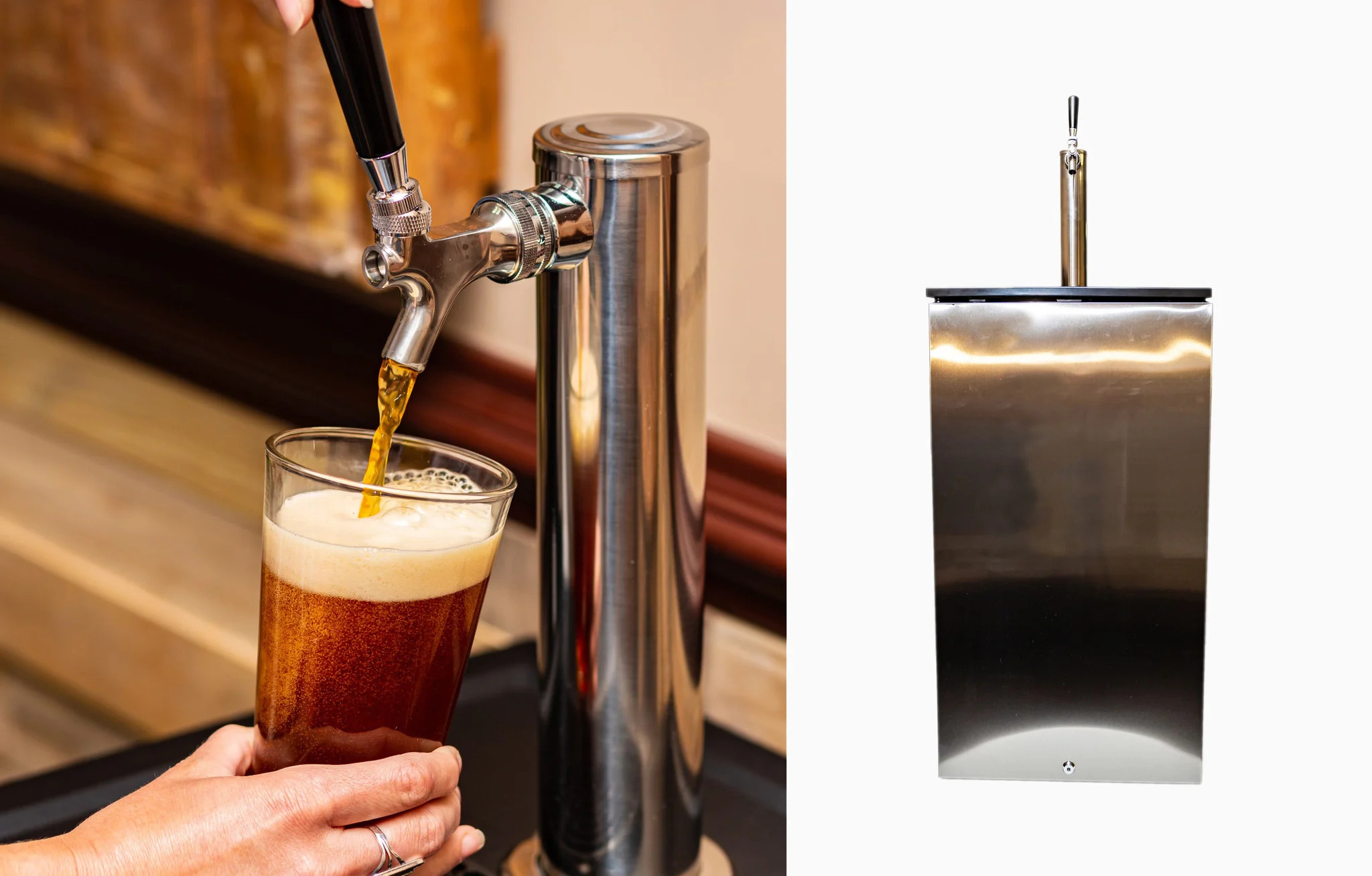

0 thoughts on “How To Know If You Need New Calipers”